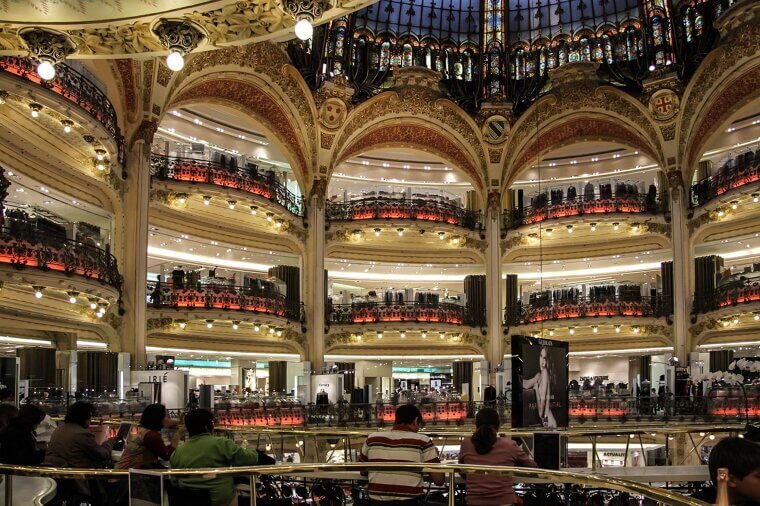Department Stores Are Fading
Today, an endless stream of online retailers has killed the department store, which was alive and thriving from the late 1800s till pretty much the early 2000s. Here are a few such stores that have closed their doors (some of them after nearly a century!)
Lord & Taylor
Lord & Taylor was the oldest American department store (starting in 1826), which closed most of their stores after filing for bankruptcy in 2020.
Montgomery Ward
Starting in Chicago, Montgomery Ward was a successful chain of department stores that ran nationwide for 128 years before closing its doors in May 2001.
Filene’s
This iconic Boston basement store skyrocketed in popularity for its “Running of the Bride” since 1947. Ultimately, it was absorbed into Macy’s in 2008.
Marshall Field’s
Marshall Field’s started in Chicago in the late 19th century and grew to have stores across the country. In 2005, it was bought by the Macy’s corporation, and all stores were rebranded as Macy’s, bringing the Marshall Field’s name to an end.
Gimbels
Once Macy’s fiercest competitor, Gimbels shut its doors in 1987, marking the end of a decades-long business rivalry.
Mervyn’s
A department store targeting middle-class Americans on the West Coast, Mervyn’s began operations in 1949 and grew to 190 stores before being acquired by Target in 1978. All Mervyn’s locations were closed by 2008.
Ames
Founded in 1958, Ames became one of America’s largest discount department store chains. After aggressive expansion and two bankruptcies, it closed all remaining locations in 2002, ending a four-decade retail run.
Almy’s
Almy’s was an upscale Massachusetts-based department store known for its tailored merchandise and quality service. Founded in the 19th century, it closed in the mid-1980s as market conditions and consumer preferences shifted.
Zayre
Zayre popularised budget shopping among countless Americans starting in 1956. Growing rapidly before being sold in 1988, ultimately, all Zayre’s discount stores were converted or closed, making way for new retail giants
Spag’s
Launching in 1936 in Massachusetts, Spag’s was known for low prices and a cash-only policy. After over 65 years of business, Spag’s closed its doors in 2004.
Steinberg’s
Steinberg’s started as a family-owned store and became a well-known regional chain selling appliances and electronics. Changing retail trends led to its closure by the early 1990s after decades in business.
R. H. Stearns and Company
Boston’s R.H. Stearns, established in 1847, became known for upscale merchandise and quality service. The beloved store closed in 1977 after city shoppers’ habits changed.
Venture Stores
Venture Stores, launched in 1970 in St. Louis, was a Midwest staple for decades before heavy competition and financial woes led to its final closure in 1998.
Gilchrist’s
Founded in Boston in 1842, Gilchrist’s became a downtown staple famous for its daylit store. As more Boston residents moved to the suburbs, demand fell, and the flagship and all locations closed in 1977.
Mammoth Mart
Launched in 1956, Mammoth Mart was a pioneering New England discount store chain. After a bankruptcy in 1974, the chain was sold, and stores were absorbed into the parent company.
Syms
Founded in 1958 in New York, Syms specialized in off-price clothing and became an East Coast retail staple. Shrinking sales led to bankruptcy and the closure of all stores in 2011.
Shoppers Fair
Starting in Detroit in 1956, Shoppers Fair grew to dozens of discount stores by the 1970s. Fierce competition forced the chain into bankruptcy, and all stores closed by 1975.
Topps
Topps Discount City began in Hartford in 1956, expanding across the Northeast by the 1960s. The death of the discount store era resulted in bankruptcy and closure by 1974.
Schultz’s Family Stores
Schultz’s, a regional department and grocery chain in the Midwest, operated in small towns and cities. Unable to survive retail consolidation, Schultz’s had closed all locations by the late 1980s.




















